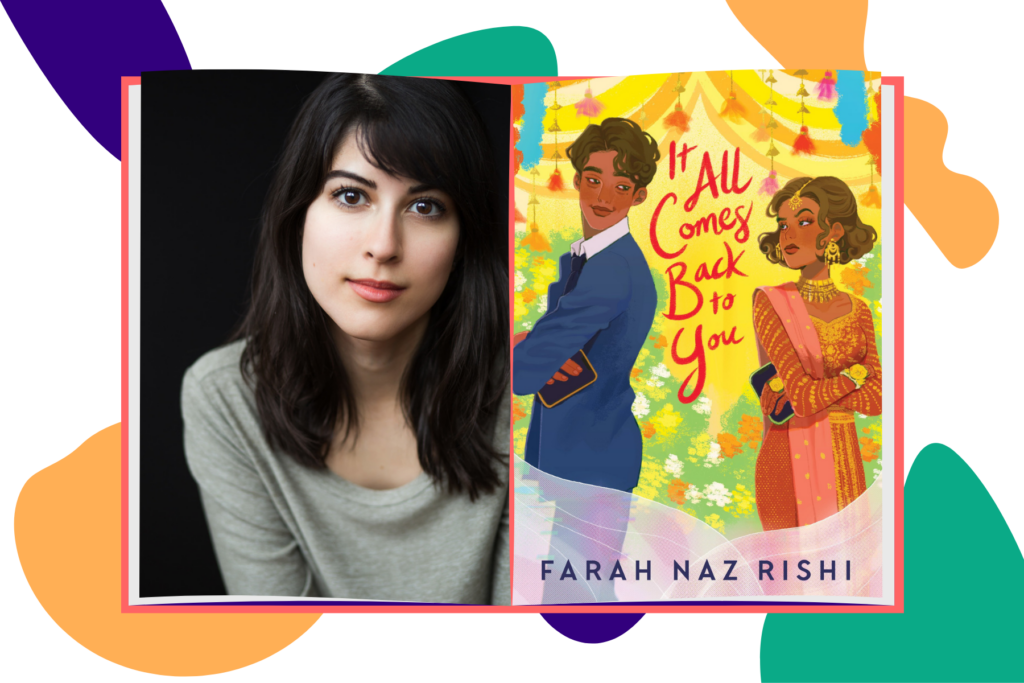
T-2 months till the wedding that will change Kiran Noorani’s life forever. Her sister is head-over-heels in love, her brother-in-law-to-be seems to be hiding a dark, shady past, and to make matters worse, a certain infuriating ex is back in town. And in the space of one summer, they’re all going to be related. It’s all up to Kiran—a stubborn, sarcastic, and fiercely protective protagonist—to meddle in a way that stops her sister from making a huge mistake that will change Kiran’s life forever.
View this post on Instagram
Farah Naz Rishi’s “It All Comes Back to You” is a refreshing romance-comedy that highlights the complexities of merging two families in a wedding. Of course, it’s made only more complicated when the siblings of the bride and groom are… exes. Full of interwoven stories, hidden pasts, and some good-old-fashioned Parent-Trap style scheming, the book features the emotional journey Kiran and Deen take to revisit their secret past in order to support their sibling’s present.
[Read Related: Author Interview: Adiba Jaigirdar of ‘The Henna Wars’]
For Kiran, nothing is more important than her sister Amira’s happiness, especially after their mother’s recent death, and so she feels that Amira is rushing into a relationship with Faisal too fast. Like, how can you know someone is the one after just three months of knowing each other? Kiran will do everything she can (Facebook stalking, fake dates, and hiring best friends as paid actors) to find out what secret Faisal and Deen are desperately hiding. For Deen, nothing is more important than his brother Faisal’s happiness, and his engagement to Amira is a chance for redemption after past trauma and pain—a lot of which Deen feels guilty for. Therefore, he makes it his mission to protect Faisal and Amira’s engagement from Kiran’s unstoppable snooping, taking help from his IRL best friend Vinny and virtual BFF (and crush) Kasia Coribund.
It’s a race against time for Kiran, as she sees her sister progress from courtship to engagement, to marriage—yet a constant reflection of her past. Familiar settings, like the local Masjid, the woods, and her mother’s old room evoke a sense of bittersweet nostalgia—one Kiran thought she had kept buried away. Deen is back in her life with his jokes, unfailing wit, and cheery demeanour, which annoys her even more, but it also stirs up painful questions like, “why did you move away without telling me?” and “why weren’t you there for me when I needed you most?” He might have been her secret boyfriend three years ago, but Kiran has moved on with the promise of starting a new chapter of her life (med school) and with the help of Devynius Foxx, her online best friend on the video game, Cambria.
[Read Related: Book Review: ‘American as Paneer Pie’ by Supriya Kelkar]
“It All Comes Back to You” is also an ode to healing and the tremendous effort it requires to overcome grief and trauma. Kiran grapples with major life changes (her sister’s wedding, her family moving, going to college, and growing up in general) in the heartbreaking absence of the one person who would know exactly how to help—her mom. In a not-so-subtle parallel, Deen struggles with identity and who he is outside of his family’s expectations and obsession with appearances. Throughout the story’s fast-paced plot, Rishi weaves in a familiar tale of family and friendship, reminding us that it often takes the support of a village to inspire us to heal and become our best selves. Although the book has all the shenanigans and sentiments of a great romance, it paints a deeper message of friendship through the bond between siblings, families, and friends, and even the bond between young people and their culture and religion. Throughout the book, Deen and Kiran learn (rather slowly, but definitely surely) how to heal and process past issues by looking inward and seeking help from loved ones. Sprinkled with Gen Z references, dancing, wedding festivities, and lots of video game chatroom banter, this book will delight both young adults and older readers.
View this post on Instagram
The feeling of reading a rom-com (a literary and film genre typically dominated by white characters and euro-centric standards of beauty) that spotlights an American Muslim girl who is figuring out love, friendship, and family is so special and significant as a brown girl myself. Rishi proves that brown girls are the main characters (just like Kiran), who lead extraordinary lives, make mistakes, celebrate successes, and learn to embrace their multi-hyphenated identities.
You can purchase a copy of “It All Comes Back To You” from HarperCollins and keep up with Farah Naz Rishi’s work here!




